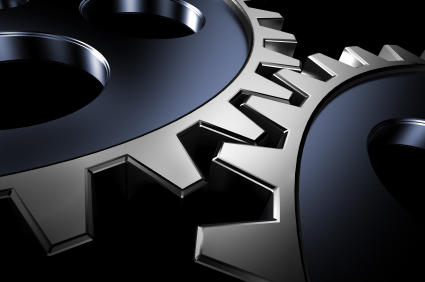Chalk up another perinatal death to inane affirmation that a woman’s body is perfectly designed to give birth.
After professing her belief in her body’s ability “to birth this baby naturally,” and “every confidence” in allowing the baby to choose her own birthday, the mother refused a postdates induction. She did not want to put at risk her desire for a VBAC after 2 C-sections.
She finally went into labor at 42 weeks and 3 days. But her baby didn’t “choose” that date because her baby was already dead and had been for nearly 48 hours.
In light of this senseless death, it is worth reviewing why a woman’s body is NOT perfectly designed to give birth. None of us are perfectly designed for anything, because the human body is was not “designed.”
As anthropologist and evolutionary medicine pioneer Peter Ellison has pointed out:
We’re trying to … educate physicians who will have a broader perspective and not think of the human body as a perfectly designed machine… Our biology is the result of many evolutionary trade-offs, and understanding these histories and conflicts can really help the physician understand why we get sick and what we might do to stay healthy.
What does Ellison mean by evolutionary trade offs?
Consider sickle cell anemia. Sickle cell anemia is caused by a genetic mutation that leads to “sickling” of the red blood cells. The abormally shaped blood cells clog the small vessels producing the characteristic painful symptoms. Evolutionary biology provides us with a reason why sickle cell anemia is so prevalent. Individuals who carry sickle cell trait (the unexpressed mutation of sickle cell anemia) are more likely to survive malaria and therefore, the trait is actually protective against a disease that is endemic in many parts of the world. When two individuals with sickle cell trait mate with each other and produce children, one quarter of the children will get a “double dose” of the trait and, therefore, suffer from sickle cell anemia. The overall benefit of sickle cell trait outweighs the cases of sickle cell anemia. Hence the trait (and the disease) have persisted.
Experts in evolutionary medicine believe that they may have found an important clue to the origin of auto-immune diseases:
Humans evolved alongside beneficial bacteria and parasitic worms, and so our ancestors built up immunity to such bugs. But nowadays with increased hygiene, we’ve eliminated the bacteria and worms. The result: Since our immune systems aren’t used to these good bugs, our bodies fight them as foreigners. That can result in allergies, asthma and autoimmune diseases …
And evolutionary medicine explains why childbirth is so dangerous for both babies and mothers. One reason is because evolution favors reproduction over health. In other words, the most successful of the species are those who produce more offspring, not perfect offspring. From an evolutionary perspective, it is better to have 10 children and have 5 die, than to have 2 perfect children.
Moreover, childbirth itself represents a compromise between competing evolutionary pressures. On the one hand, a more neurologically mature newborn is more likely to survive, so there is an advantage for a baby to be born more with a bigger head and therefore neurologically more mature. On the other hand, there is a limit to the size of the woman’s pelvis. That’s because a larger pelvis renders walking more difficult and if the pelvis is large enough, walking upright is impossible. There is tremendous evolutionary pressure to increase the size of the neonatal head and equally large evolutionary pressure to limit the size of the maternal pelvis.
As a result, there is naturally and inevitably a significant amount of incompatibility between the size of the baby’s head and the size of the mother’s pelvis. This is built into the system. In other words, a significant amount of maternal and fetal death is built into the system and is unavoidable. Understanding this leads to different conclusions than the erroneous assumption that women are “designed” to give birth.
The same principle applies to pregnancy length. The earlier a baby is born, the easier it is for the baby to fit through the maternal pelvis. The later a baby is born, the more neurologically mature it is, giving the baby a survival advantage. The variability in the length of pregnancy represents the competing evolutionary pressures on the timing of birth. The length of pregnancy is NOT a sign that the baby is “ready” to be born. We understand that premature babies are not born prematurely because they are ready to survive outside the uterus; often they aren’t. Similarly, postdates babies are not staying inside the uterus because they aren’t ready to survive; they are definitely ready to survive outside the uterus and staying inside longer can lead to avoidable stillbirth.
Human beings are not machines, and we are not “designed.” We have evolved a wide range of strategies to cope with hazards in our environment and these strategies usually represent compromised between competing imperatives. And in each individual, the compromises may be different, leading to dramatically different outcomes depending on the environment. Moreover, our personal goals are very different than the goals of evolution. Evolution favors successful reproduction; it does not favor perfect reproduction and it does not favor health. It is nothing more than wishful thinking to imagine otherwise.
Therefore, while it might be correct to state that women’s bodies have evolved to produce enough surviving offspring to perpetuate the species, it flat out false to claim that any individual woman’s body is perfectly designed (or evolved) to give birth.
Adapted from a piece that first appeared in January 2010.


